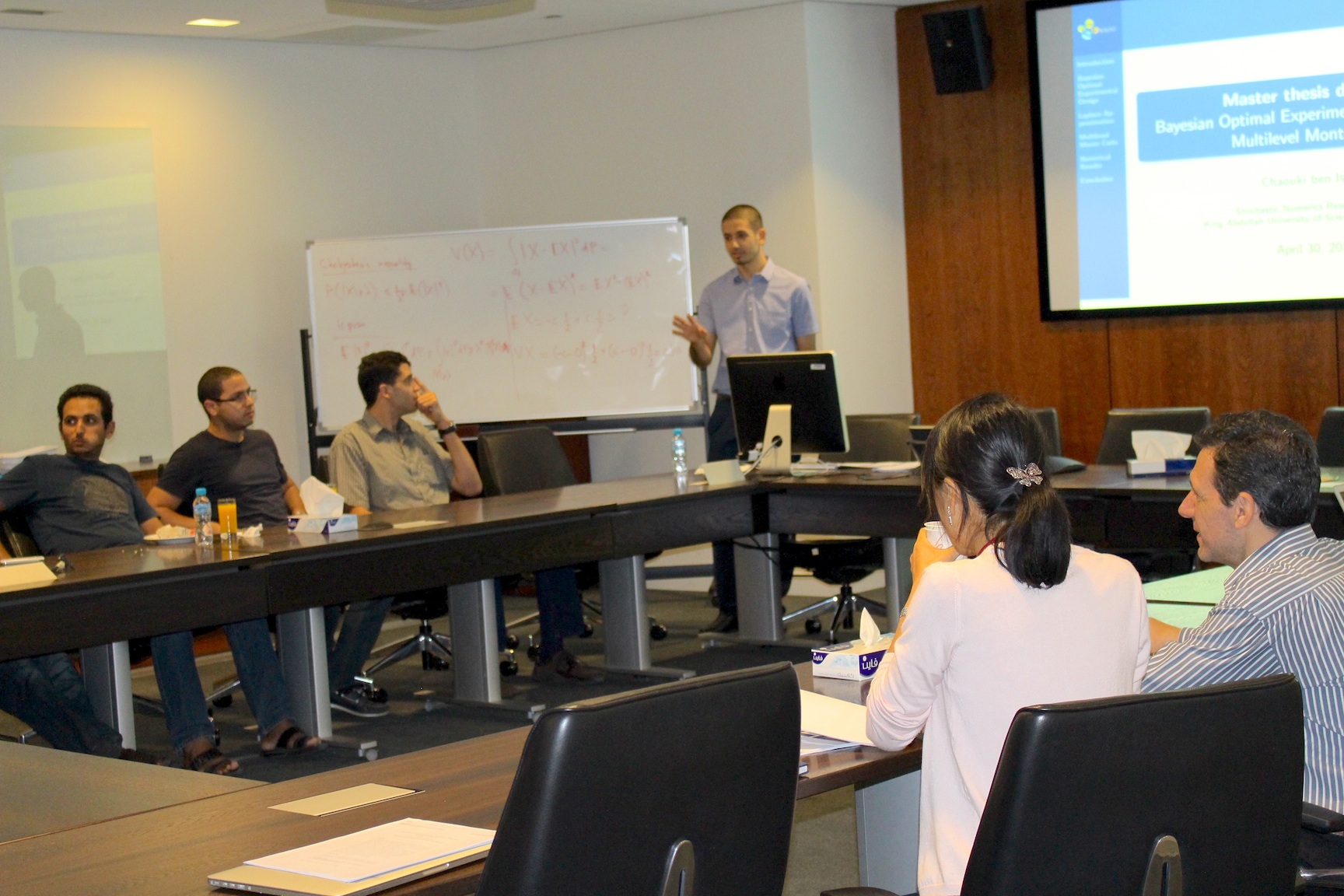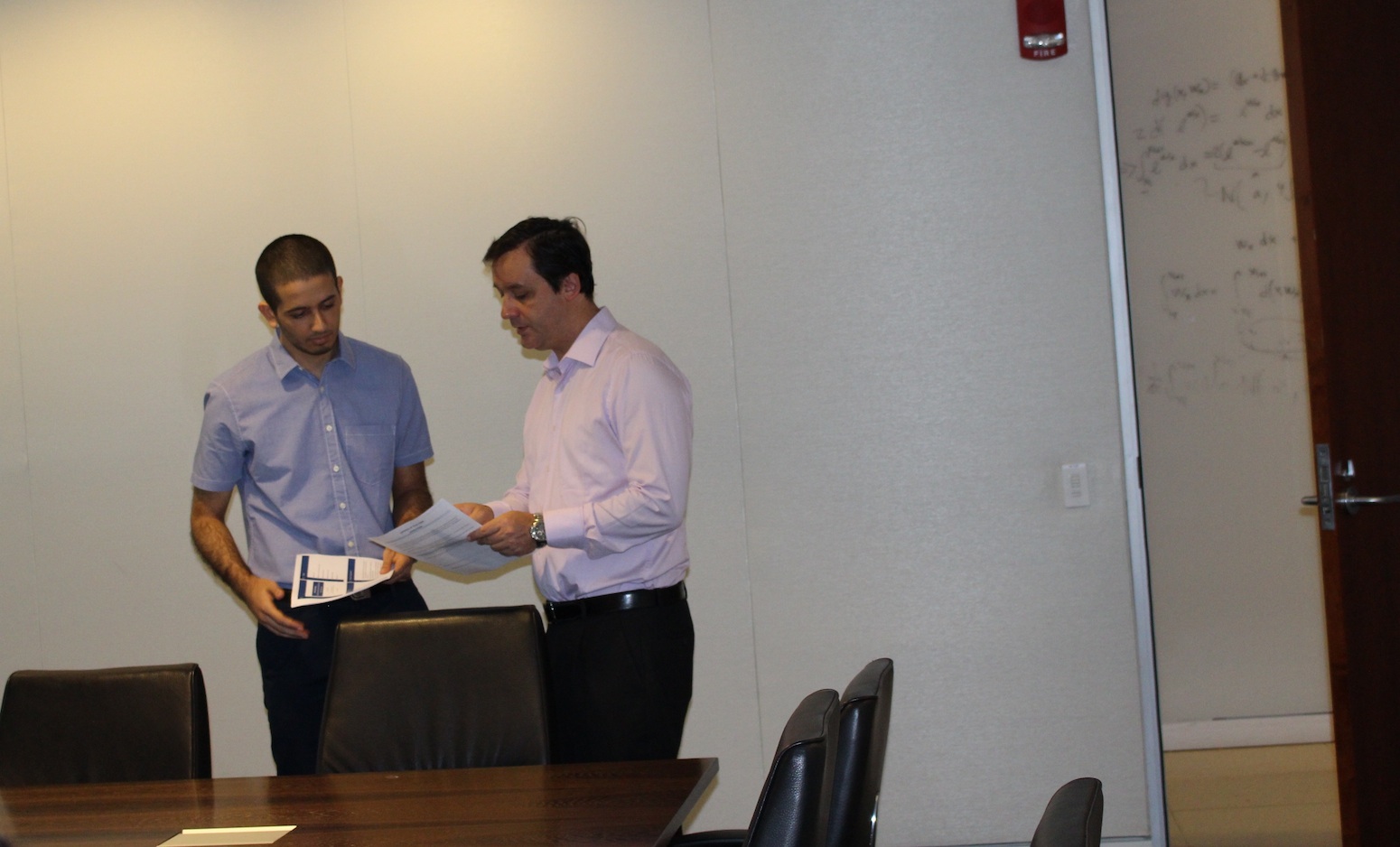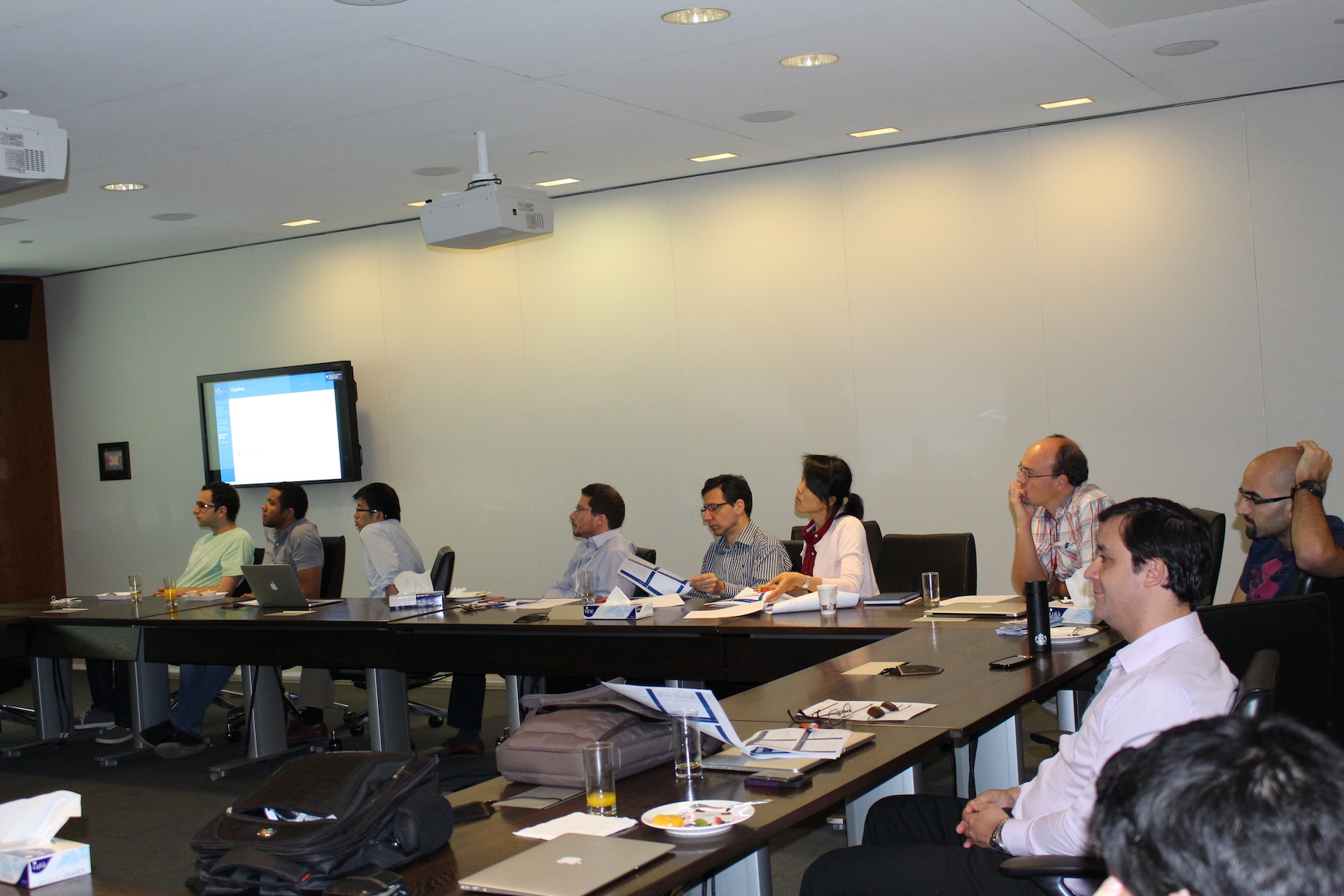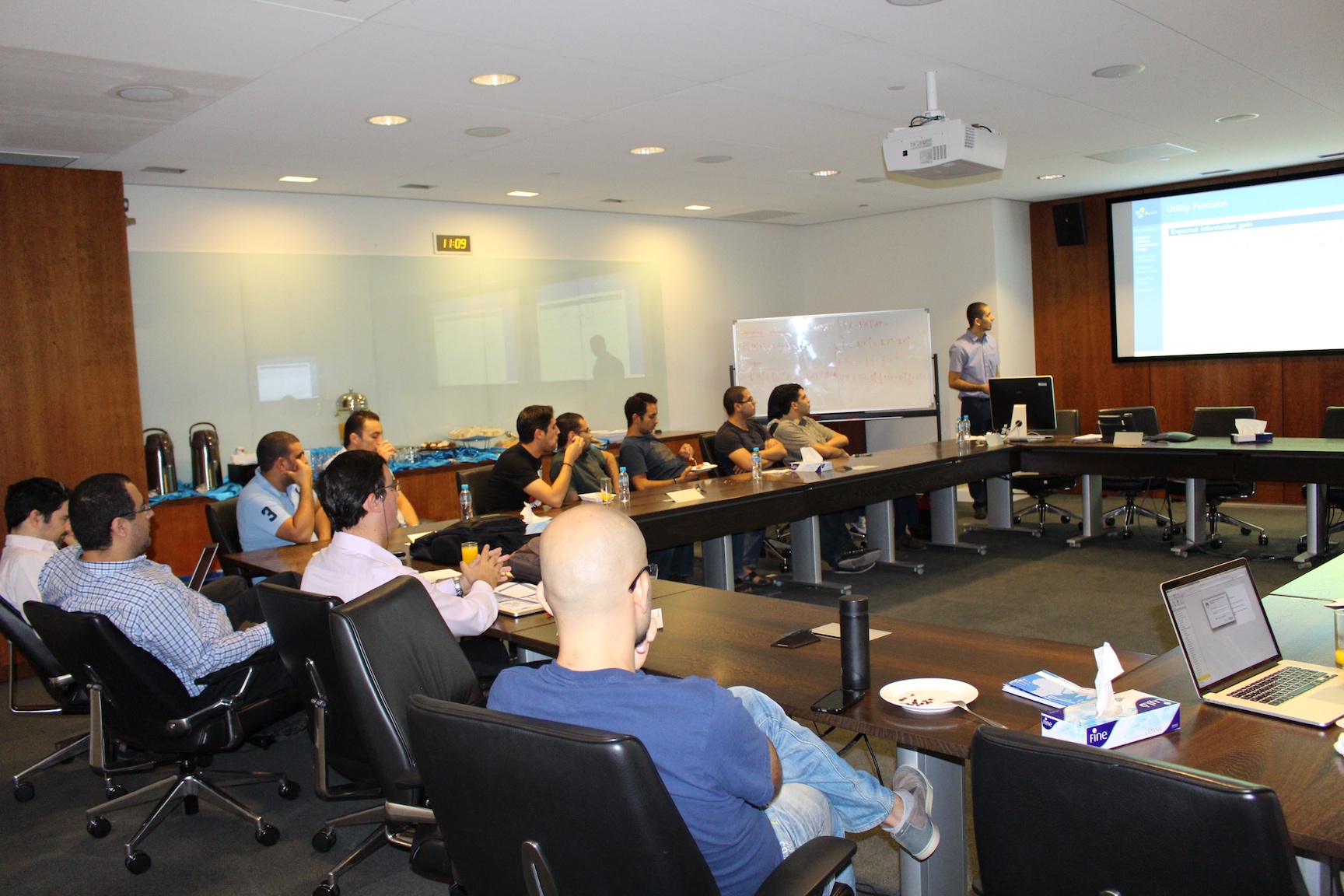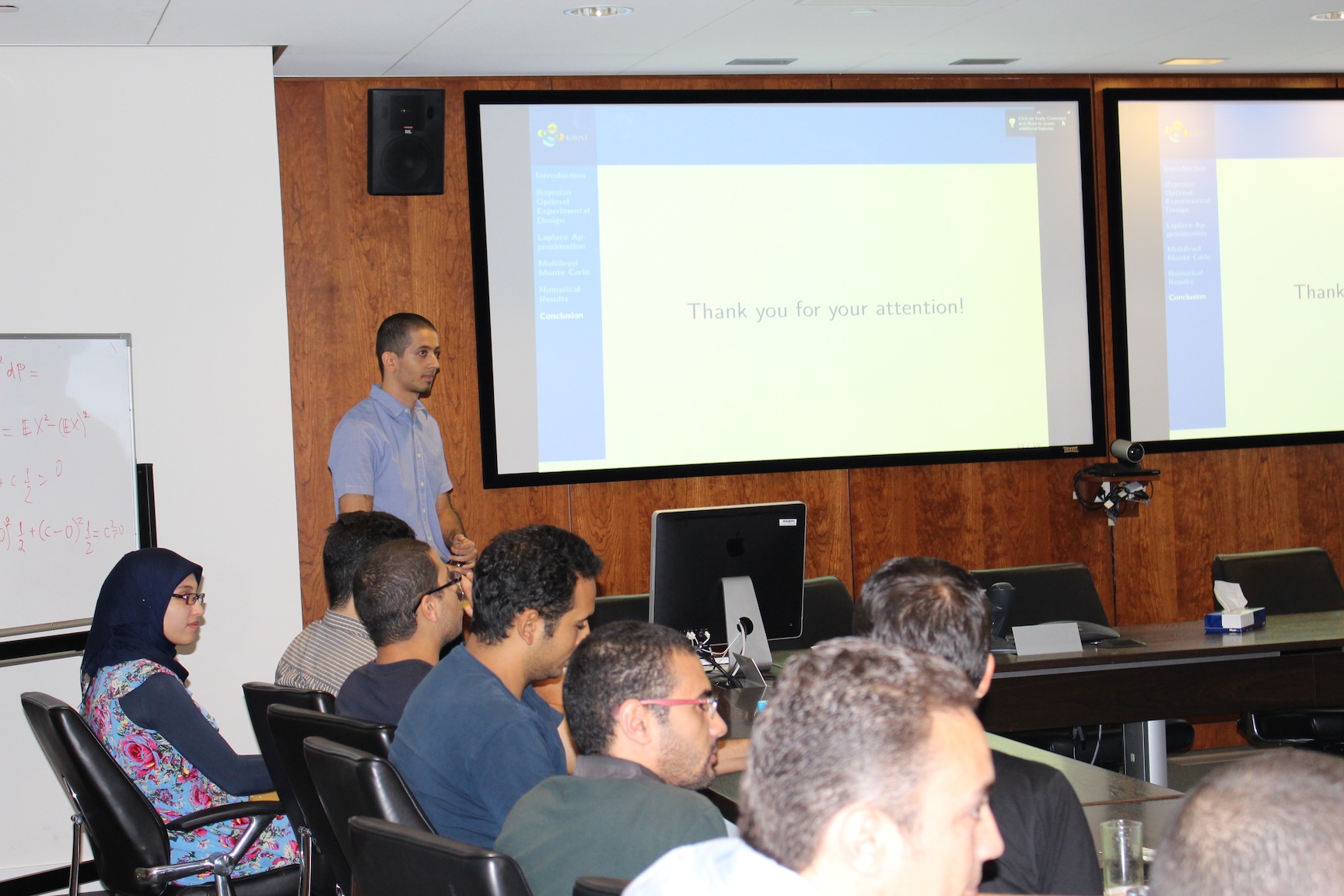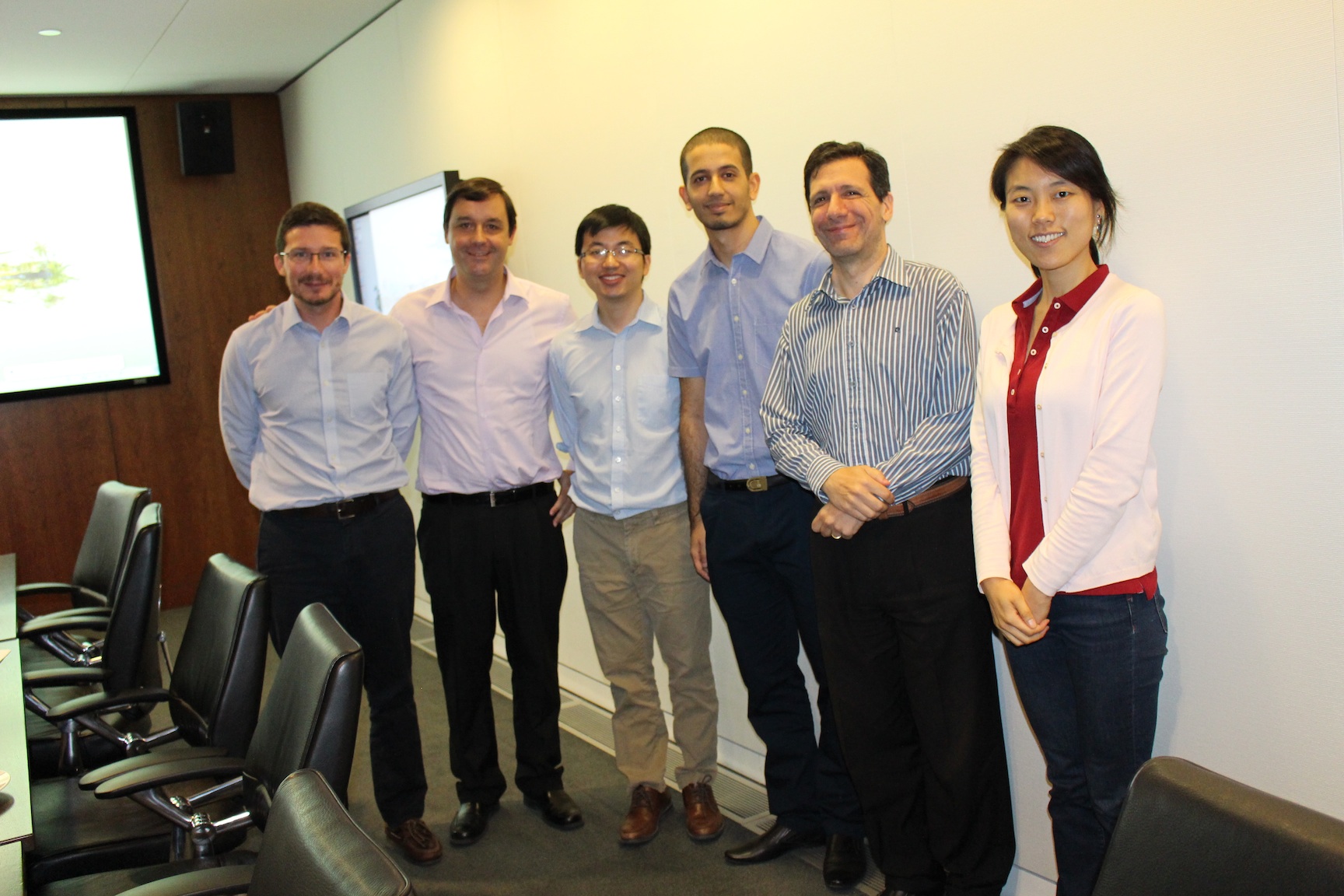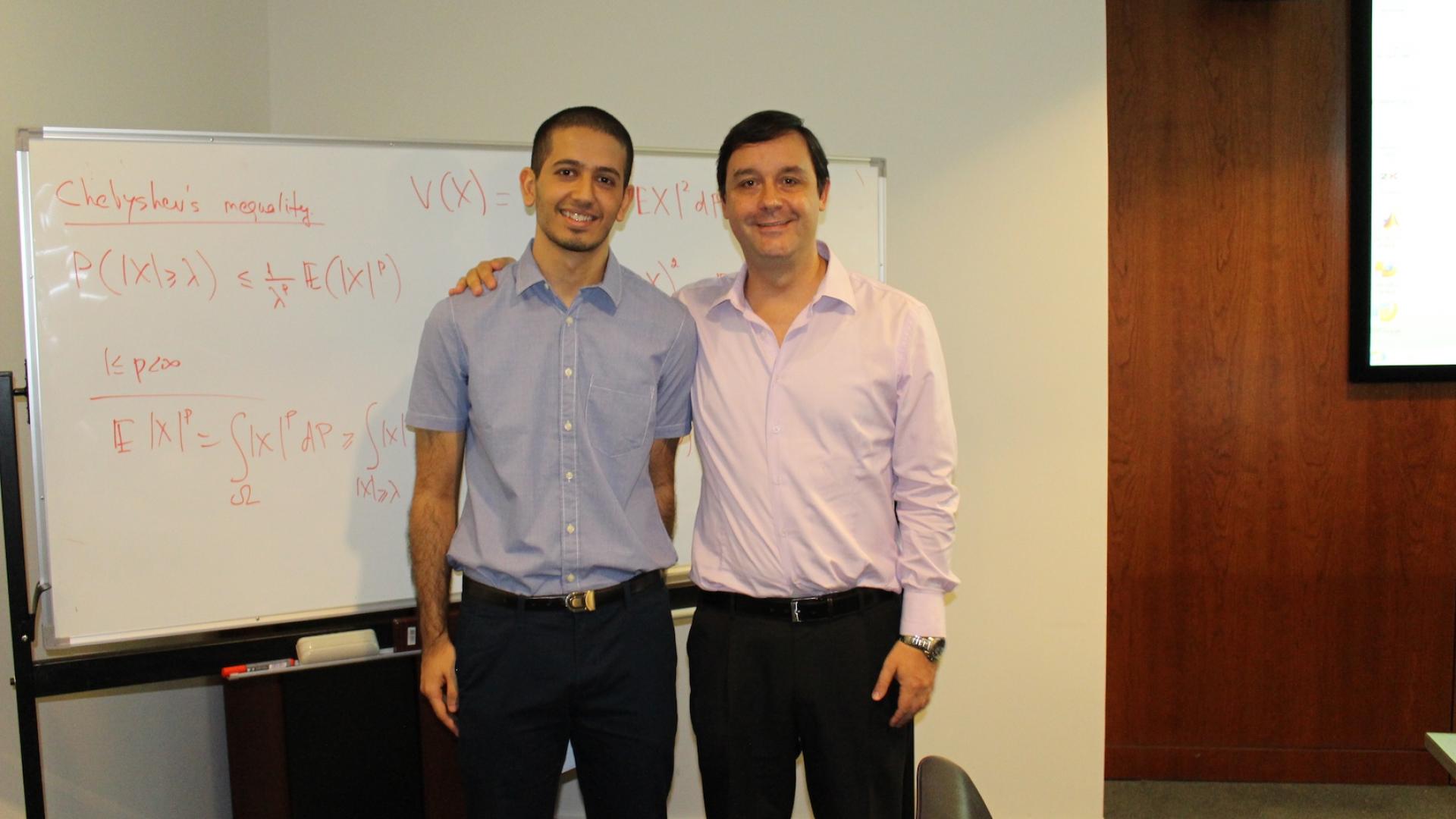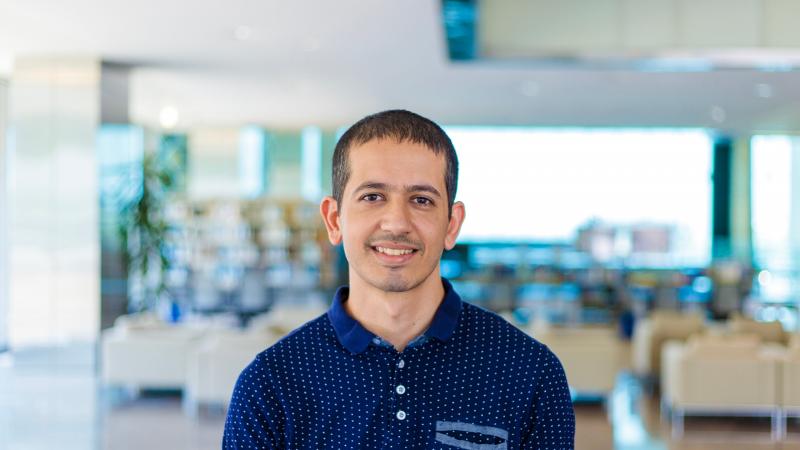On April 30th, 2015, Chaouki Ben Issaid successfully defended his MS Thesis entitled "Bayesian Optimal Experimental Design Using Multilevel Monte Carlo".
Supervisor: Prof. Raul Tempone
Co-supervisor: Dr. Quan Long
Committee Member: Prof. Ying Sun
Committee Member: Prof. Fabrizio Bisetti
Abstract
Experimental design can be vital when experiments are resource exhaustive and time-consuming. In this work, we carry out the experimental design in the Bayesian framework. To measure the amount of information, which can be extracted from the data in an experiment, we use the expected information gain as the utility function, which specifically is the expected logarithmic ratio between the posterior and prior distributions. Optimizing this utility function enables us to design experiments that yield the most informative data about the model parameters. One of the major difficulties in evaluating the expected information gain is that it naturally involves nested integration over a possibly high dimensional domain. We use the Multilevel Monte Carlo (MLMC) method to accelerate the computation of the nested high dimensional integral. The advantages are twofold. First, MLMC can significantly reduce the cost of the nested integral for a given tolerance, by using an optimal sample distribution among different sample averages of the inner integrals. Second, the MLMC method imposes fewer assumptions, such as the asymptotic concentration of posterior measures, required for instance by the Laplace approximation (LA). We test the MLMC method using two numerical examples. The first example is the design of sensor deployment for a Darcy flow problem governed by a one-dimensional Poisson equation. We place the sensors in the locations where the pressure is measured, and we model the conductivity field as a piecewise constant random vector with two parameters. The second one is the chemical Enhanced Oil Recovery (EOR) core flooding experiment assuming homogeneous permeability. We measure the cumulative oil recovery, from a horizontal core flooded by water, surfactant, and polymer, for different injection rates. The model parameters consist of the endpoint relative permeabilities, the residual saturations, and the relative permeability exponents for the three phases: water, oil, and microemulsions. We also compare the performance of the MLMC to the LA and the direct Double Loop Monte Carlo (DLMC). In fact, we show that, in the case of the aforementioned examples, MLMC combined with LA turns to be the best method in terms of computational cost.
